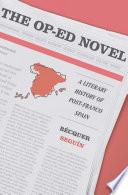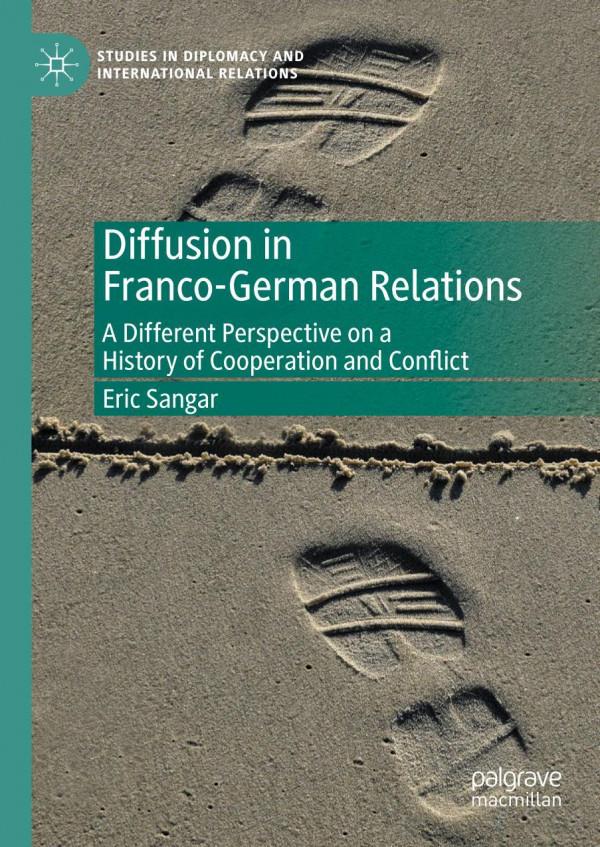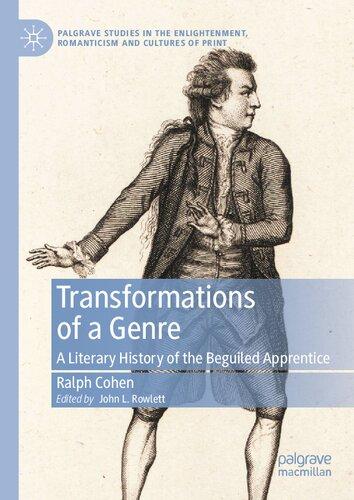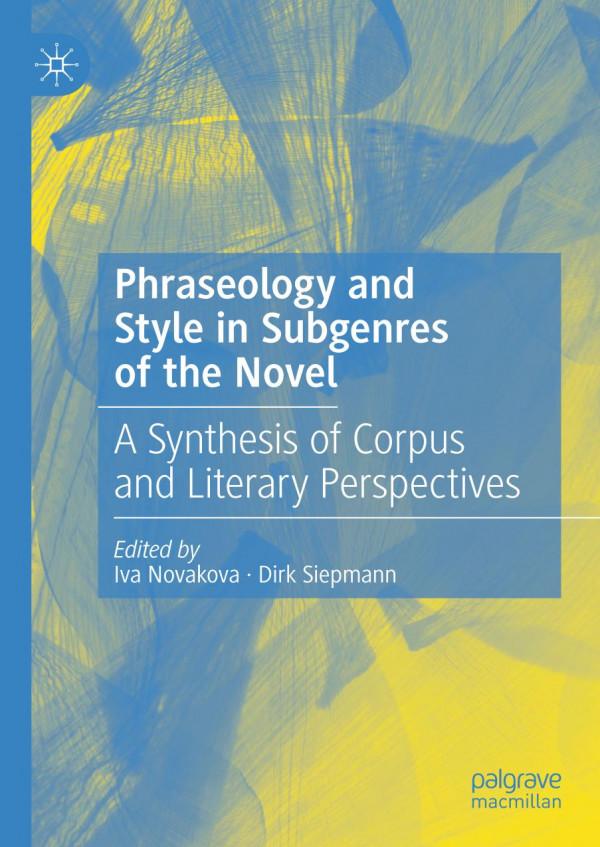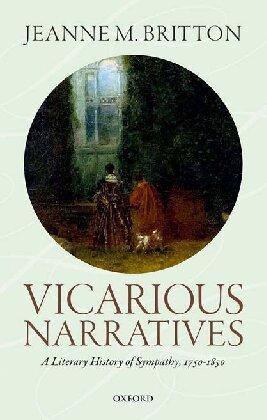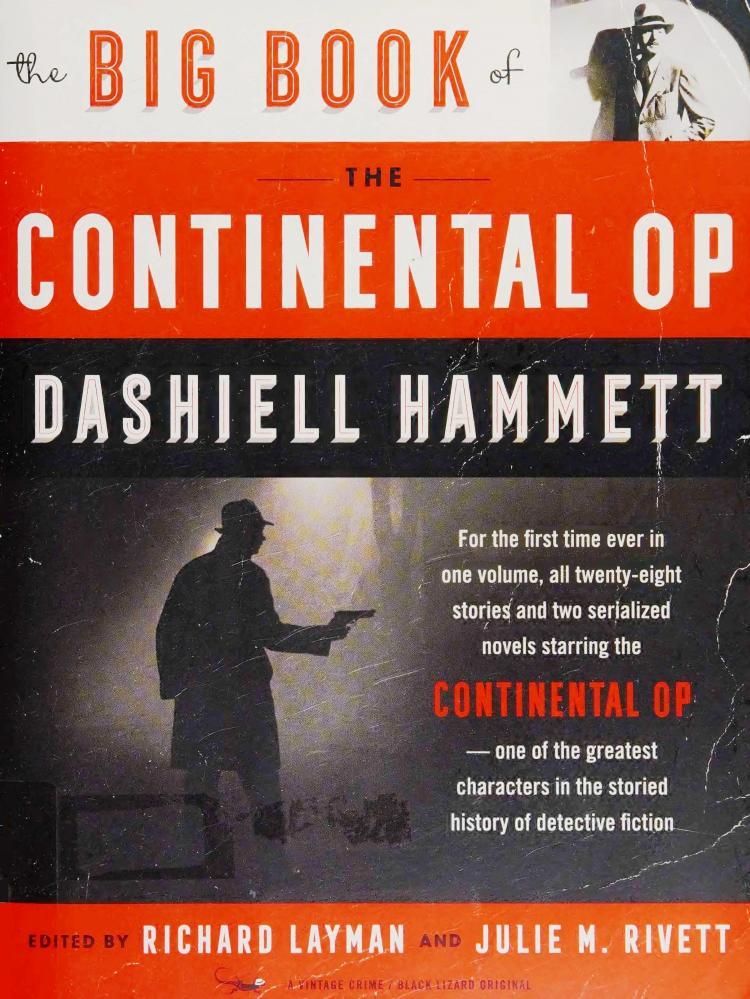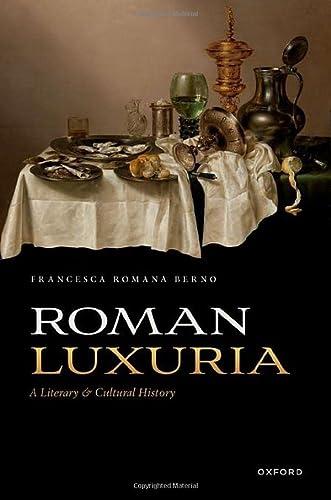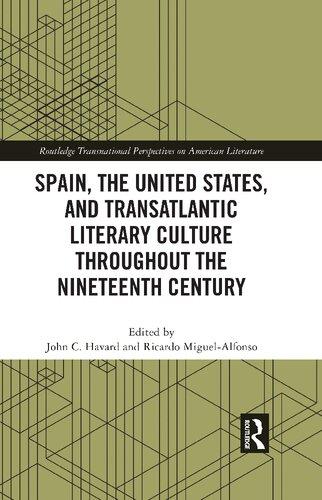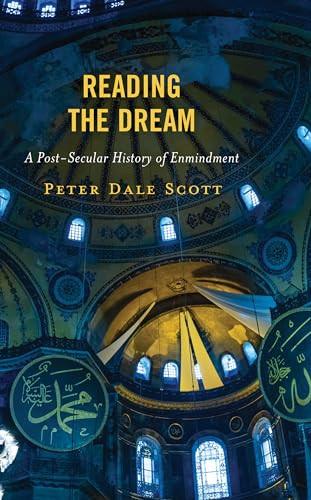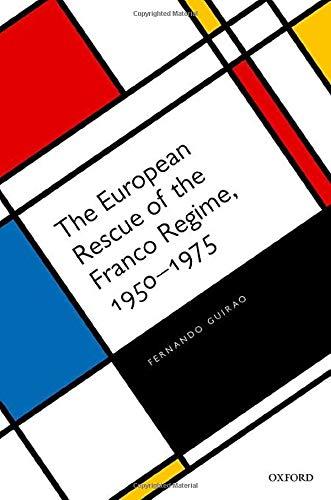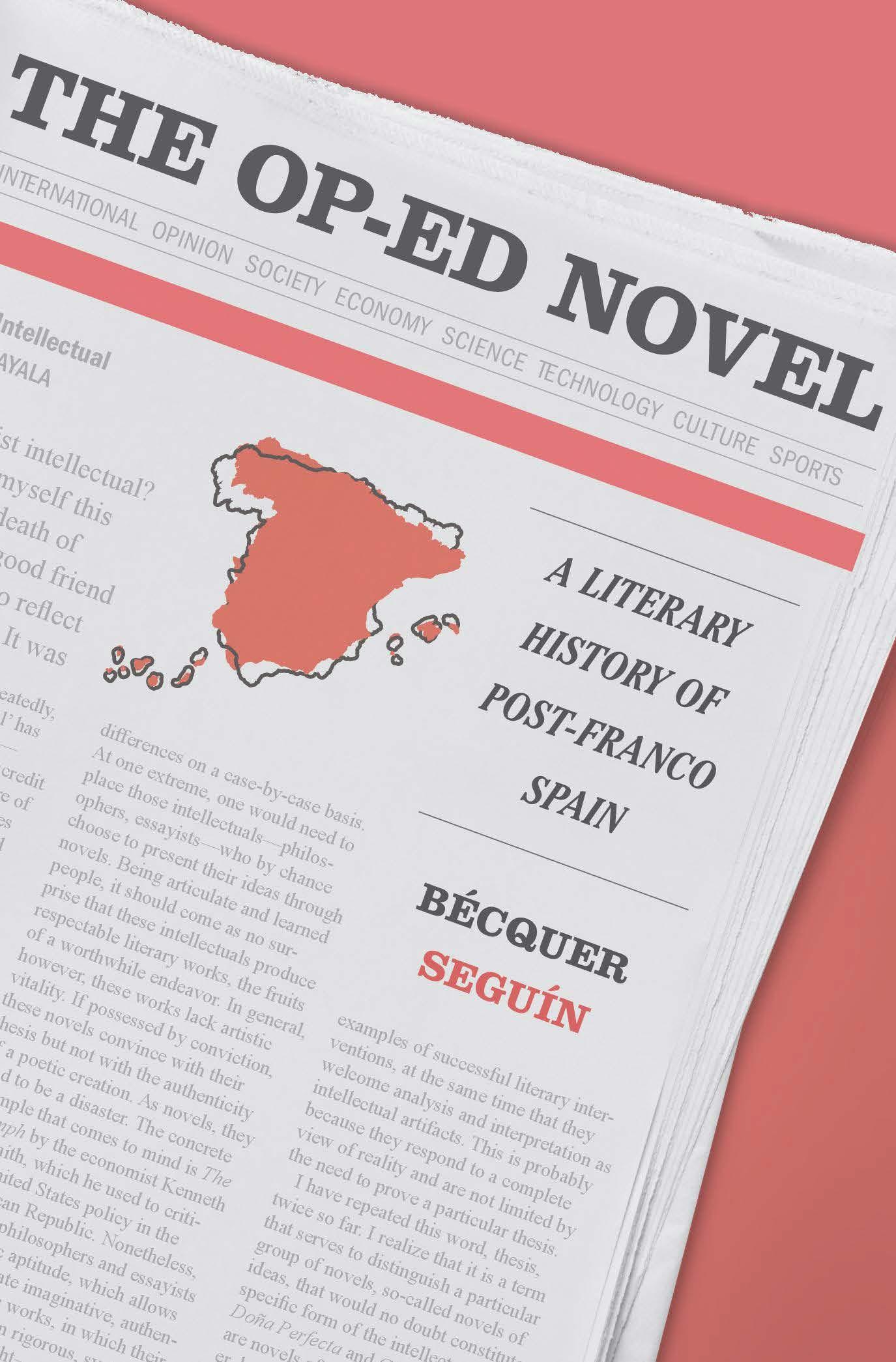Literature with an Expiration Date
Once you notice it, it’s hard to ignore: novelists are everywhere in the opinion pages of El País, Spain’s paper of record. Of the seventy-five regular opinion writers listed by the newspaper, one-third are professional novelists, and many, from Mario Vargas Llosa to Najat El Hachmi, are weekly columnists.1 Such significant literary representation in the op-ed pages of major global newspapers is uncommon. At the New York Times, for instance, the number of regular opinion writers who are novelists is one in seven.2 At Le Monde, the number is roughly one in ten.3 Since at least the mid-2000s, the Times has not included a novelist among its fifteen regular columnists, not even a one-time novelist. Le Monde fared only slightly better, having published a serialized political novel coauthored by two of its opinion columnists.4 When moving from weekly columnists to regular contributors, the numbers don’t get much better. In a good year, Le Monde might have four regular opinion writers who are also novelists, while the Times might have at most five.5 El País, meanwhile, would likely feature five times that number or more. This begs the question: Why does Spain’s most important newspaper employ so many novelists as opinion columnists?
Part of the answer takes us back to the early years of Francisco Franco’s four-decade-long authoritarian dictatorship. In 1938, at the height of the Spanish Civil War, Francoist forces began implementing a censorship regime that cut across book and newspaper publishing. The incipient regime passed its first censorship law that April, controlling the appearance of political opinion, religion, sexuality, and languages other
the
than Spanish by having censors examine books and newspapers before they went to press. The law, which gave censors a wide purview, quickly and dramatically curtailed the circulation of print material in Spain.
Journalism and fiction nonetheless took forking paths under this censorship regime. Through a heavy reliance on metaphor, insinuation, and foreign publishing houses, novel writing continued to flourish, albeit circuitously, both inside and outside the country.6 Journalism, by contrast, suffered a far bleaker fate. In regions across Spain, reporting was tightly controlled from the very first months of the Civil War.7 Following the end of the war, the new authoritarian state would subsequently place the press under the control of the interior ministry, which appointed newspaper directors, credentialed journalists, and set national propaganda policy. In 1966, after nearly three decades of strict control, the Franco regime liberalized part of its censorship apparatus with the passage of what is commonly known as the Fraga Law, named after information and tourism minister Manuel Fraga Iribarne. The new law abolished preventive censorship, meaning publishers were no longer required to submit materials in advance of publication to be approved by censors. But it retained political, religious, sexual, and linguistic restrictions, placing the burden directly on newspaper editors and book publishers to adhere to the restrictions or else risk sanctions and criminal prosecution. The regime’s bait and switch on censorship meant that significant changes to journalism would not arrive until the restoration of democracy in the late 1970s.8
This is where our story begins. Shedding four decades of restrictions on publishing, Spain’s transition to democracy breathed new life into journalism and literature. But importantly it brought these two disparate forms of writing together. The proliferation of new newspapers and magazines as well as the democratic revitalization of old ones created a vacuum of column space that suddenly needed to be filled. A young generation of journalists would come to fill most of that column space, but, following the model of Le Monde and other European newspapers, a sizable amount would be reserved for opinion writing. To fill that column space, editors of the newly legalized free press predictably turned to
Liter ature with an Expiration Date 3 politicians and other journalists, but they also turned to literary writers, and novelists in particular. Literary writers, the idea went, might more accurately represent the country’s newfound cultural and political pluralism.
If these were some of the historical reasons why novelists began populating Spain’s op-ed pages in the late 1970s, there were also aesthetic ones. During the last years of the Franco dictatorship, a new generation of journalists began cultivating a form of opinion-oriented reporting that went by the name of periodismo informativo de creación (literary news journalism).9 Following the de facto lifting of press restrictions in 1975, newspaper opinion sections would become the laboratory for this new form of experimental writing that combined news, opinion, and literary style. At the same time, this new form legitimated and created readerly appetite for literature-inflected opinion writing. The new generation of young journalists who developed the new form included Manuel Vázquez Montalbán, Francisco Umbral, Rosa Montero, and Maruja Torres, all of whom would go on to become some of the most influential voices in post-Franco Spanish opinion journalism. Not surprisingly, these same columnists would also go on to become celebrated novelists. In a matter of decades, the inverse would also become true. A 2004 study of the opinion pages of Spain’s seven leading national newspapers found that literary writers were second only to journalists in the number of columns they wrote. In fact, 16 percent of columnists, the study found, were literary writers, which was more than politicians and university professors combined.10
This book tells the story of a group of novelists in post-Franco Spain who left their mark on column writing. The group includes Antonio Muñoz Molina, Javier Marías, Javier Cercas, Almudena Grandes, and Fernando Aramburu—some of the most renowned Spanish novelists of the post-Franco era. In becoming opinion columnists, these novelists also transformed how they wrote literary fiction. Each of them, in different ways, incorporated into their novels aspects of the argumentative practices they had honed in their column writing. As a result, they saw fiction as a place for settling scores with fellow intellectuals,
making speculative historical claims, and advancing partisan political projects—as well as testing the limits of genre, form, and style.
Antonio Muñoz Molina was the first of the group to become an opinion journalist. Having studied journalism briefly in university, he began writing columns for local newspapers in Granada in the early 1980s, amid Spain’s decade-long transition to democracy. But writing newspaper columns was not his day job. For nearly a decade he worked as a civil servant in Granada’s municipal office, writing columns and drafting novels and short stories after hours. Muñoz Molina’s life changed in 1986, when he published his first novel, Beatus Ille (A Manuscript of Ashes), with the major Catalan publishing house Seix Barral. He left his job as a civil servant shortly after to dedicate his time exclusively to novel writing. His vertiginous novelistic output over the next decade led to correspondingly meteoric rise to literary stardom, during which he won two National Literature Prizes—the Spanish equivalent of a Pulitzer—in a span of four years and was elected to the Royal Spanish Academy, becoming the youngest of the elite institution’s fortysix members.
The most internationally renowned member of the group, Javier Marías, was, for many years, the torchbearer of Spanish literature. Born into a well-known scholarly and artistic family in Madrid, he published his first two novels by the time he graduated from university. It would take Marías another two decades, however, to cement his inimitable literary style: long, digressive, and philosophically reflexive prose, punctuated by fleeting moments of action. With this in mind, it seems unlikely he would have been suited to the fast-paced, argumentative form of the op-ed. But by the end of his career, Marías became almost equally wellknown in Spain for his irascible Sunday columns as for his awardwinning novels. During the early days of his journalistic career, his column polemically outed writers and intellectuals who had collaborated with the Franco regime. By the end of his career, the column looked to contravene the habits of Spain’s politically correct public sphere. Of all the writers in the group, Almudena Grandes most wore her political commitments on her sleeve. A Madrid native, she achieved
Liter ature with an Expiration Date 5
literary fame with her first novel, which broke with the Franco-era taboo on sexuality and tackled the themes of teenage eroticism and sexual experimentation head-on. Her career in journalism began less explosively, with a literary column in the El País’s Sunday magazine. Yet halfway through that career, she turned on the literary persona she had created, instead embracing more explicitly political themes in her opinion writing. Her novels soon followed suit. Out went sexuality and other themes that could be pinned on her gender; in came trenchant critiques of Spain’s history, politics, and economics. Regardless of which piece of writing by Grandes one was reading, all came from an avowedly left-wing perspective.
Javier Cercas was the group’s, and perhaps Spanish literature’s, enfant terrible. Born in the mountainous region of Extremadura but raised in Catalonia, he began writing novels in the late 1980s, while working as a university professor—mostly at the University of Girona, but also for a short time at the University of Illinois Urbana–Champaign. It was only after he swapped the university campus for the reporting trip in his fourth novel, Soldados de Salamina (Soldiers of Salamis, 2001), that his unique form of autofiction turned him into an internationally renowned writer. Turning a side career as an opinion writer into the subject of endless novelistic fascination, Cercas used autofiction’s nonfictional veneer to accrue public legitimacy for his political viewpoints, helping cultivate for himself the public intellectual persona of someone who is attracted to counterintuitive ideas.
Fernando Aramburu was the last of the group to take up opinion journalism, and the last of the group to reach the heights of literary and intellectual acclaim. Born in San Sebastián, Aramburu left Spain for Germany in 1985, earning a living as a language teacher and writing novels, short stories, and poetry during his spare time. Although, like many of his peers, he published his first opinion pieces in the late 1990s on the heels of novelistic success, he did not immediately become a regular opinion-maker. Over the next decade his op-eds remained few and far between. Everything changed with the publication of Patria (Homeland, 2016), his eighth novel. The novel, which deals with the
complicated moral and political issue of the Basque conflict, singlehandedly launched a novelist-intellectual career like few others in the history of Spanish literature, leading to more than a dozen prizes, an HBO series, and a weekly column at one of the country’s most widely read newspapers. In fact, in many respects this one novel propelled Aramburu’s recognition as a literary and intellectual authority in Spanish society beyond that of nearly all his peers. Its weighty subject matter, the Basque conflict, has also become a staple of his opinion column, giving him a moral authority unparalleled among novelist intellectuals in Spain.
These novelists admittedly make for strange bedfellows. They were not part of a club, nor did they meet regularly at a tertulia to discuss matters of literature and politics. They were rarely seen in public together, and, in fact, many of them didn’t even like each other. Marías once called Muñoz Molina a moralist, a conservative, and a proto censor. Muñoz Molina once insinuated that Grandes had apologized for war crimes. Grandes once suggested Cercas had written a dishonest novel. Muñoz Molina once mocked Cercas for being a snob. Grandes once denounced Muñoz Molina as a demagogue. The list of jibes and accusations goes on. Of the group, Aramburu, it appears, was the only one who seemed to get along with everyone. And even this appearance of congeniality may only be the result of his late arrival to novelist intellectual fame.
Besides literary renown, it appears that little else holds this eclectic group of novelists together. They represent an array of distinct literary voices within Spain’s most distinguished class of fiction writers. Stylistically, their novels cut across literary genres, both new and old, from autofiction to historical fiction to detective fiction. Argumentatively, their novels focus on disparate, if not opposing, subjects, from political fanaticism in Aramburu to political deception in Cercas. Yet what unites these writers is that they shared many years, if not decades, working together as columnists for El País. From the 1990s onward, this group of writers helped define what it meant to be both a novelist and an intellectual in Spanish society.
The Fourth and a Half Estate
The phenomenon of literary writers populating the opinion pages of Spain’s newspapers is not new. It has a history that dates back to the turn of the nineteenth century, and this history comprises the other part of the answer to the question of why Spain’s most important newspaper employs so many novelists as opinion columnists. In the early nineteenth century, Spanish newspapers addressed a very narrow, influential, and elite readership simply by virtue of existing as printed text. In 1803, fewer than 6 percent of Spaniards could read.11 At the time, the country was ruled by the absolute monarchy of Charles IV, and its censorship regime meant that newspapers in Spain were prohibited from discussing political matters. They did so, of course, through metaphor, allusion, and other forms of covert literary messaging. In one memorable instance, the late-Enlightenment poet-intellectual Manuel José Quintana attacked his contemporaries by way of Virgil, whom he accused of being “a sycophant of tyrants.”12
The Peninsular War would provide a jolt to the legal landscape of newspaper publishing in Spain. In 1810, the Cortes de Cádiz approved the country’s first freedom of the press laws, which were subsequently enshrined in the liberal Constitution of Cádiz in 1812. However, by the end of 1813, Fernando VII had reestablished an absolutist monarchy, thereby rejecting the Constitution of Cádiz and the press rights it brought with it.13 The critical issue for readers in Spain at the time was not so much determining which newspaper published the most reliable information but rather deciphering which political interests each newspaper served. For the next two decades, suspicion of the press was so extreme that Spanish readers largely perceived literary works as hewing more closely to the truth than periodicals.14
It was in this context that Spain’s literary writers began penning modern opinion columns. The most notable of these writers was Mariano José de Larra, one of the most influential figures of Spanish Romanticism and widely regarded as the father of Spanish columnismo (column writing).15 During the first decades of the nineteenth century,
Larra forged his style of Romanticism almost exclusively in the press, using newspaper columns to develop his trademark form of literary costumbrismo, a narrative style depicting the customs, local color, and everyday life of a particular region. Larra’s region was Madrid. A writer, journalist, and editor in the Spanish capital, Larra saw Fernando VII’s censorship regime from up close as well as from other important vantages. As a writer and journalist, he pseudonymously penned social criticism in columns for an array of newspapers that included La Revista Española, El Correo de las Damas, El Observador, El Español, El Mundo, and El Redactor General. His columns often used satirical fiction to take aim at everyone from the king to the Cortes Generales, mocking everything from the latent habits of Spaniards to the tics of newspaper editors. As an editor, Larra launched two satirical newspapers during the late 1820s and early 1830s. These papers, El Duende Satírico del Día and El Pobrecito Hablador, briefly provided writers the opportunity to indirectly criticize those in power, as well as the broader social habits that might stem from elite malfeasance.16
The importance of Larra and other Romantic writers in establishing the literary legitimacy of writing for newspapers cannot be overstated. By the mid-nineteenth century, that legitimacy was gaining ground in perhaps the country’s most powerful enclave of academic prestige: the Real Academia Española, or Royal Spanish Academy. In 1845, Joaquín Francisco Pacheco, a lawyer and jurist who had founded the newspaper La Abeja, used his inaugural speech as a member of the Academy to defend the place of journalism in the world of letters. Journalism, he claimed, was an “independent genre” of literature and the “talent of the great writers” had helped the genre mature as an art form.17 Soon he would not be alone. Over the second half of the nineteenth century, writers with one foot in journalism and the other in literature used their induction into the Academy as an opportunity to sing the aesthetic praises of journalistic writing. Nonetheless, if asked whether journalism was literature, the scholar Jorge Miguel Rodríguez Rodríguez has argued, many of these inductees would have answered, “Literature, yes, but of a second order.”18
This mantra would hold through the end of the century. Late nineteenth-century writers such as Juan Valera, Eugenio Sellés, and Isidoro Fernández Flórez (known as Fernanflor) walked the tightrope of simultaneously defending journalism as well as asserting its artistic inferiority to poetry, drama, and fiction. Journalism, these and other writers argued in their speeches before the Academy, was hampered mostly by the requirement to serially produce writing. Although some writers made the case that the journalism of certain authors could “equal the good works of professional literature,” many of them recognized that journalism was perhaps most ideal for raising a writer’s profile. By the end of the century, Spain’s reading public had grown to 33.45 percent, meaning journalism could serve to popularize a writer’s output better than earlier systems of artistic patronage.19 Furthermore, regular newspaper columns and other kinds of serial contributions might have a knock-on effect, inspiring the swelling reading public to support more traditional genres of literary writing. All of this, they reasoned, would amount to economic stability for literary writers through regular payments and an enlarged public profile.20
As academics in the royal academy consolidated their aesthetic defense of journalism, the role of newspapers in Spanish public life was changing dramatically. Although, for much of the nineteenth century, newspapers had been used as weapons on behalf of political parties, the 1860s and 1870s witnessed the growing independence and professionalization of journalism. By the turn of the twentieth century, newspapers had mostly become trusted daily sources of news and information. Opinion journalism had become regularized. Many of Spain’s literary journalists had embraced and expanded on Larra’s approach to opinion writing. They wrote even more regularly for the press than Larra and his generation had. And they gave it a new name: articulismo (article writing). The literary-journalistic form Larra had helped develop in the early nineteenth century had passed through the hands of the country’s midcentury satirical press before it was taken up, toward the end of the nineteenth century, by late Romantic and Realist writers such as Emilia Pardo Bazán, Benito Pérez Galdós, and Carmen de Burgos, whose
the
contributions to the press became a central part of their oeuvre. In addition to article writing, some literary writers, such as Gustavo Adolfo Bécquer, even worked as editors for various papers. Of all the turn-ofthe-century writers, however, it was perhaps Leopoldo Alas “Clarín” who came closest to what we would recognize today as a modern-day newspaper columnist, penning an average of seven columns a month between 1875 and 1901.21
By 1898, the year Spain lost most of its overseas empire as a result of the Spanish-American War, newspapers had become the cornerstone of the Spanish public sphere. Newspapers were so central, in fact, that in 1904 the writer, intellectual, and university rector Miguel de Unamuno complained that his articles in the press were more well-known than any of his books, even his novels.22 The types of publications to which literary intellectuals contributed grew to include not only newspapers and other broadsheet periodicals but also magazines, which flourished especially in Madrid as a result of early twentieth-century tertulias, regular intellectual gatherings typically held at cafés.23 Still, the opinion column dominated as the preferred periodical genre of choice among literary intellectuals. Across three prewar literary generations—the socalled generations of 1898, 1914, and 1927—a number of writers used opinion columns to synthesize intellectual interests as disparate as philosophy, medicine, and poetry, developing a free-flowing style that came to be called ensayismo (essay writing).
Perhaps the most famous practitioners of this new essay form were Eugeni d’Ors and José Ortega y Gasset, two of Spain’s first modern intellectuals. In the first decades of the twentieth century, d’Ors, who was based in Barcelona, created a new form of the opinion column called gloses.24 Gloses were a kind of short-form commentary, mostly on current affairs, which often appeared as a sequence of sentence-length paragraphs that read like individual aphorisms. As with an op-ed, gloses were meant to appeal to a wide audience and their political argument sometimes wouldn’t be revealed until the last line. It has been estimated that, over the course of five decades, d’Ors wrote more than 18,000 gloses in Catalan, Spanish, and French.25
Liter ature with an Expiration Date 11
Ortega y Gasset’s contribution to Spanish opinion writing was philosophical. Located in Madrid, Ortega’s articles, unlike d’Ors’s, were explicitly written for the lettered elite. His at times lengthy opinion articles were heavy on claims, argumentation, and moral righteousness, written in the recognizable proposal-laden tone found in many op-eds today. Yet they were also essays in a technical sense: first attempts at testing out new ideas. Ortega’s two most influential books, La España invertebrada (Invertebrate Spain, 1921) and La rebelión de las masas (The Revolt of the Masses, 1930), for instance, originally appeared as articles in the newspaper El Sol. In 1923, following in the footsteps of his parents, who edited and owned the newspaper El Imparcial, Ortega founded his own periodical, the magazine Revista de Occidente. It has been described as his “broadest, most extensively collaborative, most internationalist, and final major periodical.”26 The goal of the magazine was to revitalize Spanish intellectual life following the end of World War I, in part by connecting it to the rest of Europe. The Revista, he wrote in the inaugural issue, ultimately aspired to “reveal the plane of a new architecture on which Western life is being reconstructed.”27 Many decades later, the magazine’s ethos of learned debate would provide Ortega’s son, José Ortega Spottorno, who cofounded the parent company of El País with Jesús de Polanco, an intellectual floor plan for the opinion pages of his new paper.28
During this period of generic effervescence, the opinion column also often became a parody of itself. Manuel Chaves Nogales, a respected columnist and a novelist, lamented the sophomoric approach to column writing that had taken hold during the interwar period. For Chaves Nogales, reporting was the cornerstone of journalism, and reporting was best communicated through narrative rather than argumentative writing. Reporting meant traveling, talking to strangers, falling into unpredictable or uncomfortable situations. Yet many columnists, he observed, sat at their desks and scrutinized the news at a remove from its sources and context. Chaves Nogales had little patience for the “classical columnist who every morning stands on his soapbox and speechifies at his own whim.” These writers, he argued, “do not have anything
the
to do with the newspaper,” because, instead of reporting, “they pull articles out of their heads on all that is divine or human.”29 The further professionalization of journalism over the course of the twentieth century put a squeeze on individual voice and persuasive writing.30 However, as Spain began its transition to democracy, many young journalists at El País, Diario 16, and other newly established papers came to reject Chaves Nogales’s critique of opinion journalism. After four decades of Francoism, the problem was not so much that opinion writing lacked an empirical basis but rather that it lacked any original opinion at all.
What Is a Novelist Intellectual?
Who were these new opinion writers? And what was their connection to literature? On January 6, 1983, Francisco Ayala, one of Spain’s foremost twentieth-century novelists, decided to pose these very questions in an op-ed for El País. “What is a novelist intellectual?” he asked, identifying a new figure in the Spanish intellectual landscape. Both a renowned novelist and respected intellectual, Ayala was well positioned to inquire about this new figure. Often considered the last member of the so-called Generation of ’27, which included Federico García Lorca, Rafael Alberti, and Nobel Prize winner Vicente Aleixandre, Ayala had returned to Spain just a few years earlier, in 1976, after nearly four decades in exile following the Spanish Civil War. By 1983, he was at the height of his intellectual influence. Later that year, the second volume of his three-volume memoir, Recuerdos y olvidos (Memories and oblivions), would go on to win Spain’s prestigious National Literature Prize. Ayala answered the question the only way he knew how: by going to the text. Rather than examine the figure of the novelist intellectual, he wanted to see whether there was anything distinctive about the works of authors who had been labeled novelist intellectuals, either because they were intellectuals who had written a novel or because they were novelists who had become famous for their ideas. He focused on three novelist intellectuals in particular: Benito Pérez Galdós, Jean-Paul Sartre, and Kenneth Galbraith. Galbraith and Galdós sat at either
Liter ature with an Expiration Date 13
extreme. Galbraith was a renowned economist who happened to have written a satirical novel about American foreign policy in Latin America. Galdós, by contrast, one of the most important Spanish novelists of the nineteenth century, happened to have written novels that critics would later call “novels of ideas.”31 For Ayala, however, neither Galdós nor Galbraith was a novelist intellectual. As he explained, novels by novelist intellectuals were instead ones like those by Sartre: “imaginative, authentically poetic works, in which [the intellectual’s] thought— even rigorous, systematic forms of thought—appears efficiently embodied in fictional characters.” Without that embodiment, “the individuality of the author, with their system of ideas,” Ayala continued, “prevails upon the eyes of their readers thanks to the imaginary reality it evokes, such that their work does not achieve the autonomy necessary to capture the reader emotionally and completely absorb them in the work.”32 A true novelist intellectual, in other words, was a rare breed: ideas by novelists seldom reached widespread acclaim, and very few intellectuals could fully suppress their tendency toward argumentative writing, even in their literary works.
Ayala wrote the op-ed as an homage to the Argentinian writer Eduardo Mallea, who had died just weeks earlier. For much of his career, Mallea had allegedly been disparaged as a novelist intellectual—that is, as neither a true novelist nor a true intellectual but as an inadequate mixture of the two. Something similar had happened to Ayala himself. The question of what a novelist intellectual is, he wrote, “was a question I had asked myself repeatedly, since the label ‘novelist intellectual’ has often been applied to my own work—which, at bottom, is an attempt to discredit it. The move reflects a common feature of our times, in which anything that aspires to some kind of distinction is considered antidemocratic.”33 Ayala was going against the zeitgeist, arguing that, in some sense, all novelists were intellectuals and all novels were novels of ideas, even if they didn’t perform the social function of intellectuals or novels of ideas. What novelists thought about the social function of their novels had, for Ayala, a seismic impact on how they wrote them, including which aesthetic features they decided to use.
At around the same time, the French philosopher Gilles Deleuze worried the emergence of this new figure of the novelist intellectual might help opinion journalism cannibalize other sectors of culture. In an interview for the French literary magazine L’Autre Journal in 1985, he ventured to suggest that “maybe journalists are partly responsible for this crisis in literature.” By journalists, he was referring specifically to opinion journalists. And by opinion journalists, he was thinking specifically about how, after the mid-1970s, the generation of the nouveaux philosophes, which included Bernard-Henri Lévy, André Glucksmann, and Alain Finkielkraut, among others, had inaugurated a wholesale change to the French intellectual landscape, devaluing the philosophical profession in the process. “We may congratulate ourselves on the quantitative increase in books, and larger print runs,” he said, “but younger writers will end up molded in a literary space that leaves them no possibility of creating anything.” According to Deleuze, the literary market was being crowded out and made homogeneous—a phenomenon that was driven, he claimed, by the myriad best sellers written by nouveau philosophe intellectuals. Their magnetic prose, sweeping arguments, and constant output had caused a paradigm shift in the publishing industry and literary community alike. “The situation affects all writers: any writer [now] has to make himself and his work journalistic,” Deleuze wrote. “In the extreme case everything takes place between a journalist author and a journalist critic, the book being only a link between them and hardly needing to exist.”34 Whether opinion journalism had, by the mid-1980s, caused a crisis in literature—or whether this supposed crisis in literature had existed at all—is debatable. What is perhaps less debatable is that novelists were intertwining their fictional and nonfictional writing in ways that were not yet fully understood.
In Spain, this intertwining of column- and fiction-writing has been especially intense since the 1990s. The novelists studied in this book, in particular, have practiced forms of column- and fiction-writing—some new, some old—that have blurred the boundary between two genres. They have often seen their columns as extensions of their novels, and
Liter ature with an Expiration Date 15 their novels as column-writing by other means, each genre serving the particular needs of its newspaper- or fiction-reading audiences. Today, newspaper audiences are numerous but ephemeral. Although circulation numbers for Spain’s major national newspapers hover in the low hundred-thousands, a weekly column from an established novelist might only net only a fraction of those readers. Yet those perhaps tens of thousands of readers might come back regularly, week after week. Once casual or one-time readers are added to the mix, an established newspaper columnist in Spain can, over the course of the several years it takes to write a novel, reach a rather broad audience, even if in a fractured way.35 Fiction audiences, by contrast, tend to be small yet enduring. Despite Spain’s limited culture of book reading, today’s bestselling literary fiction can reach a significant audience, comparable even to that of an opinion column. Novelist intellectuals in particular regularly appear on bestsellers lists of not only literary fiction, but books in general.36 This is especially true of the group of novelist intellectuals studied in this book. These writers have published some of the widest circulating works of contemporary Spanish fiction, perhaps exceeding the readership of several years’ worth of columns. They include Javier Cercas’s Soldados de Salamina, Almudena Grandes’s El corazón helado (The Frozen Heart, 2007), and the three volumes of Javier Marías’s Tu rostro mañana (Your Face Tomorrow, 2002–2007), which have reportedly sold over one million, 700,000, and 450,000 worldwide copies, respectively.37
To these figures we might also add the experiential gulf between the two genres. It takes several minutes and usually not a significant amount of attention to read an op-ed. Reading a novel takes hours of emotional, intellectual, and physical investment. This difference stems from the purpose of each genre: while the op-ed’s pithiness gives it the flexibility to keep pace with the ever-quickening information cycle, making it one of the most ephemeral of prose genres, the novel is engineered to escape that cycle and have a very long life across generations of readers who may or may not be knowledgeable about its social, historical, or political context.
Yet, as we will see throughout this book, the persuasive ends of both novels and op-eds, for these novelist intellectuals, often remain strikingly similar. Some of the novels analyzed in this book further develop political claims first introduced in the author’s op-ed. Others test political arguments that will be subsequently defended in the author’s opinion writing. Some of the novels shape public exchanges among intellectuals, academics, and other elites around a particular topic. Others are shaped by public criticism of an author’s public exchanges. In these and other cases, novel- and opinion-writing remain inextricable. Observers who fail to recognize this risk a limited understanding not only of the ends to which certain contemporary novels are being put, but also of the changing role of the novelist in public life.
Today, scholars and critics generally treat fiction and opinion journalism as opposing genres of writing. They have come to think that if literature is politically persuasive at all, it is because it asks questions and complicates existing assumptions. Novels that explicitly advocate certain political views risk becoming artless dogmatism. Opinions are anchored in certainty and conviction while “fiction,” the critic James Wood has argued, “moves in the shadow of doubt, knows itself to be a true lie, knows that at any moment it might fail to make its case. Belief in fiction is always belief ‘as if.’”38 It is this fundamental difference that is said to prevent fiction from being politically persuasive in the same way as political speech. Any work that, like an opinion column, sets out “to communicate an unambiguous, virtually exhortative message,” the scholar Susan Suleiman writes, risks “authoritarianism” by becoming “pure propaganda without art.”39 At earlier moments in literary history, novels that fell into this trap of political persuasion were termed the social problem novel, the roman à thèse, or the novela de tesis. Across a number of literary traditions, such novels have accordingly been ignored or marginalized.
In the study of Spanish literature, scholars almost by default treat a novelist’s nonfictional writing separately from their fictional works, operating under the tacit assumption that it would be inappropriate to treat fiction and nonfiction together. Even scholars who study the
Liter ature with an Expiration Date 17
opinion journalism of Spanish novelists adhere to this incompatibility thesis.40 This book challenges the notion that opinion journalism and fiction are incompatible on both historical and theoretical grounds. Historically, opinion journalism and literature in Spain have shared a harmonious relationship since the advent of mass-market newspapers in the early nineteenth century. So harmonious, in fact, that the country’s foremost practitioner of the modern newspaper column, Mariano José de Larra, was also one of the most canonical figures of Spanish Romanticism. In the present, the relationship between opinion journalism and novel writing is cozier still. Since the op-ed formalized modern opinion writing in the 1970s, fiction has made use of the argumentative strategies of opinion journalism. This book is an attempt to explain the nature of this generic coziness. Yet, as long as the fictional and nonfictional parts of a writer’s oeuvre are considered separately, these argumentative strategies will remain imperceptible.
The theoretical approach of this book is to bring these two genres together. Reading novels and op-eds alongside one another reveals how some novels blend narrative and nonfictional evidence to make political arguments, borrowing features of opinion journalism to trouble the fiction-nonfiction divide. These are what I call “op-ed novels.” Some novels are op-ed novels in their genesis: they novelize a writer’s op-ed or are in some way made from the raw materials of opinion journalism. Other novels qualify because they extend a writer’s opinion journalism into the fictional realm. In some cases, novelist intellectuals might even expect real-world consequences to result from revelations or claims made in their fiction. In addition to the benefits of a potentially wider audience, novels can also function as a preserving agent for political arguments. They can more readily license speculative claims, leaving half-baked implications, insinuations, and suggestions in the hands of readers rather than fully fleshing them out. In some cases, opining on current affairs between the covers of a novel leads to the peculiar situation in which a writer feels compelled to openly defend the nonfictional aspects of their fictional work, as if failing to do so would tarnish their standing as a public intellectual. Such possibilities mean that reading
only the novels or only the opinion writing of novelist intellectuals— rather than both, together—reveals only half the story.
Some critics have caught onto the persuasive ends of certain twentyfirst-century novels. Reviewing the final volume of the French writer Virginie Despentes’s Vernon Subutex series, one reviewer found “the novel’s real energy” to be “somewhere between contrarian op-ed and off-colour standup.”41 Writing about the latest David Eggers novel, another critic asked: “Did Eggers mean to write an op-ed, instead of a novel?”42 Still another review, this time of a Richard Powers novel, was less coy about the work’s aesthetic claim. As its title lay bare, the review considered the novel nothing less than “An Op-Ed Essay Masquerading as a Novel.” “Good novels,” the piece warned, “are rarely built on good intentions or politics.”43
This book develops the idea that op-eds can masquerade as novels. But perhaps not in the ways imagined by these critics. Novelist intellectuals have written across genres, but three literary modes in particular stand out for their ability to achieve political persuasion: autofiction, the novel of ideas, and literary populism—a new kind of fiction writing that attempts to pass compositional balance for ideological impartiality. Novelists within and outside of Spain have used these three forms in different ways to complicate the distinction between fiction and nonfiction. Examining these forms helps us understand, for instance, why some novelists feel attacked when their fictional work is criticized for nonfictional reasons, such as fudging the historical record or making a shoddy argument. Other novelists might respond by pointing out that the work is a work of fiction; writers of op-ed novels, however, often do not.
Once we think of these literary forms as opinion journalism by other means, we begin to see how writers become aesthetically and intellectually wedded to the fiction-nonfiction divide. Attending to this divide is especially important. As we will see throughout this book, it has for years shielded certain novelist intellectuals from public criticism for their political opinions. These novelists have claimed the nonfiction value of their work when they have deemed it expedient to do so, such as
Liter ature with an Expiration Date 19
when they defend the historical accuracy of their historical fiction. Yet they have also claimed the fictional purity of their work when it has suited them, denying the factual accuracy of their writing, or the need to be factually accurate at all, on the grounds that their writing is merely fiction. Novelist intellectuals have long moved between these extremes in both fiction and nonfiction writing, blurring what are clearly works of fiction with opinion writing that might be held to certain journalistic standards. What licenses this confusion—and allows authors to play both sides of the divide—is the closeness of their fiction to nonfiction.
Reading fiction and nonfiction together, however, doesn’t mean treating these two forms of writing as being one and the same. Nor does it mean returning to biographical criticism, a practice Roland Barthes, Michel Foucault, and many others warned against long ago.44 Fiction and nonfiction are different kinds of prose writing, each with its own aesthetic, narrative, and verisimilar features.45 Treating them identically would be nonsensical and counterproductive. Yet reading for argument, as though a novel had similar aims to those of an op-ed, expands the amount of information relevant for understanding a work of fiction: not only the national and global contexts of current affairs but also how the creative capacities of literary genres and forms can be wielded for rhetorical, evidentiary, and other argumentative purposes. Fiction is distinct from but compatible with nonfiction, just as real-world events can meaningfully shape a novel but cannot exhaust our understanding of it.
While many philosophers from György Lukács to Jacques Rancière have viewed the politics of literature as internal to literature itself, this book sees the politics of literature as also being external. The existence of the op-ed novel suggests as much. Put differently, this book attempts to identify how writers use their novels as vehicles for real-world political debates in a direct way. Herein lies the book’s distinct and unconventional approach to the politics of aesthetics. Literary works, not unlike works of history, policy papers, or speeches at a rally, can make public claims on current affairs and can do so beyond the context of literary history. Yet op-ed novels are not indifferent to their aesthetic
